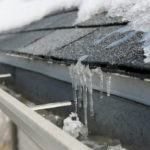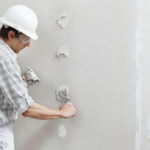Roofing Blog
- Home
- Roofing Blog

What are Attic Vents and Why are They Important?
It’s important to understand the importance of proper attic ventilation. Attic ventilation plays a crucial role in maintaining the overall health of your home. In this article, I will discuss what attic vents are, why they are important, and the benefits of proper attic ventilation. I will also provide information on the signs of poor attic ventilation, the types of attic vents available, how to choose the right one, and how to install and maintain them. Additionally, I will dispel common misconceptions about attic ventilation and explain the importance of proper airflow in the attic. Lastly, I will discuss how attic ventilation can improve energy efficiency in your home.
Introduction to Attic Ventilation
Attic ventilation is the process of allowing air to flow into your attic space and back out. This airflow helps to regulate temperature and humidity levels in your home. Without proper ventilation, moisture and heat can build up in the attic, leading to problems such as mold growth, roof damage, and decreased energy efficiency.
What are Attic Vents, and Why Are They Important?
Attic vents are openings in the roof or walls of your home that allow air to flow in and out of the attic space. They come in various shapes and sizes, including ridge vents, soffit vents, gable vents, and roof vents.
The importance of attic vents cannot be overstated. Proper ventilation helps control the temperature and humidity levels in your home, preventing moisture buildup and reducing damage to your roof and other structural elements. It also helps to make your house more energy efficiency by reducing the amount of heat that builds up in the attic, which can help to lower your energy bills.
The Benefits of Proper Attic Ventilation
There are numerous benefits to having proper attic ventilation in your home. These include:
1. Preventing Moisture Buildup
One of the most important benefits of proper attic ventilation is that it helps to prevent moisture buildup in your attic. When moisture accumulates in the attic, it can cause various problems, such as mold growth, wood rot, and damage to your home’s roof and other structural elements. Proper ventilation helps to keep the air moving and prevent moisture from accumulating, reducing the risk of these problems.
2. Extending the Life of Your Roof
Another benefit of proper attic ventilation is that it will help to extend the life of your roof. When heat builds up in the attic, it can cause the shingles on your roof to become brittle and crack, reducing their lifespan. Proper ventilation helps to keep the attic cool, which can help to prevent this type of damage and prolong the overall life of your roof.
3. Improving Indoor Air Quality
Proper ventilation in the attic will also improve indoor air quality by limiting the amount of moisture and pollutants in the air. When moisture accumulates in the attic, it can lead to mold growth, releasing spores into the air and cause respiratory problems. Proper ventilation helps prevent this buildup and improves the overall air quality in your home.
Signs of Poor Attic Ventilation
It’s important to be aware of the signs of poor attic ventilation so that you can take action before serious damage occurs. Some common signs of poor attic ventilation include:
– Mold or mildew growth in the attic or on the ceiling
– A musty smell in the attic or in other areas of the home
– Moisture or condensation on the walls or ceiling
– Peeling paint or wallpaper
– Ice dams on the roof in the winter
If you notice any of those signs, it is important to take action to improve your attic ventilation as soon as possible.
Types of Attic Vents and How to Choose the Right One

Several types of attic vents are available, each with its own benefits and drawbacks. Here are some some of the most common types of attic vents include:
1. Ridge vents
Ridge vents are placed on the roof’s peak, allowing hot air to escape from the attic. They are a great choice for homes with long and straight roofline.
2. Soffit vents
Soffit vents are placed under the roof overhang, allowing air to enter the attic. They are a good choice for homes with a shorter roofline or where there is limited space for other types of vents.
3. Gable vents
Gable vents are installed on the gable end of the roof, allowing air to flow and escape from the attic. They are a good choice for homes where ridge or soffit vents are not possible.
4. Roof vents
Roof vents are placed on the roof, allowing hot air to flow away from the attic. They are a good choice for homes with a steep roof pitch.
When choosing the right attic vent for your home, it is important to consider factors such as the shape and size of your roof, the climate in your area, and the overall design of your home. A professional contractor can help you choose the right type of vent for your specific needs.
How to Install and Maintain Attic Vents
Proper installation and maintenance of attic vents are crucial for ensuring that they function properly and provide the maximum benefits to your home. Here are some very helpful tips for installing and maintaining attic vents:
1. Hire a Professional
Installing attic vents can be a complex process, and you must hire a professional roofing contractor who has years of experience with this type of work. They can help you choose the right type of vent for your home and ensure it is installed properly.
2. Check Regularly for Damage
It is important to regularly check your attic vents for signs of damage or wear and tear. Cracks or other damage can prevent the vents from working properly, so it is important to have them replaced or repaired as quickly as possible.
3. Keep the Vents Clear
To ensure that your attic vents function properly, keeping them clear of any debris, such as leaves, branches, or other materials is important. Regularly cleaning the vents can help to prevent blockages and ensure that air can flow freely in and out of the attic.
Do Attics Need to be Vented? Common Misconceptions About Attic Ventilation
There are many misconceptions about attic ventilation, and one of the most common is the belief that attics do not need to be vented. However, this is not true. Attic ventilation is crucial for maintaining your home’s overall health; without it, you could face various problems, such as mold growth, roof damage, and decreased energy efficiency.
Do Attics Need Ventilation? The Importance of Proper Airflow in the Attic

Proper airflow in the attic is crucial for maintaining the overall health of your home. When air is allowed to flow freely in and out of the attic, it helps to regulate temperature and humidity levels, preventing moisture buildup and reducing damage to your roof and other structural elements of your home. It also helps to be more energy efficient by reducing the amount of heat that builds up in the attic, which can help to lower your energy bills.
Attic Ventilation and Energy Efficiency
Attic ventilation can play a significant role in improving the energy efficiency of your home. When heat builds up in the attic, it will cause your air conditioner to work harder, leading to higher energy bills. Proper ventilation helps keep the attic cool, reducing the work your air conditioner has to do and helping to lower your energy bills. Also, proper ventilation can help prevent heat loss in the winter, reducing your heating bills.
Conclusion: The Importance of Proper Attic Ventilation
Proper attic ventilation is essential to maintaining your home’s overall health. It helps to prevent moisture buildup, extend the life of your roof, improve indoor air quality, and improve energy efficiency. If you suspect that your attic ventilation may be inadequate, it is important to take action to improve it as soon as possible. Hiring a professional contractor and regularly maintaining your attic vents can help ensure they function properly and maximize your home’s benefits.



